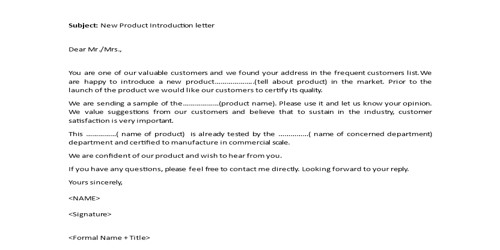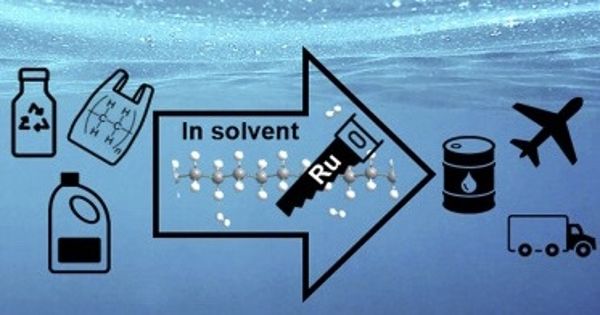Analysis of Aggregate Management Indebtedness:
Whenever there is evidence of self serving upon the part of a bank’s management credits is large and their quality questionable certain computations, in addition to the recapitulation at the head of the schedule, will be useful in illustrating the situation. Accordingly, a summarization of the classification of all management items at the conclusion of the schedule will at times prove valuable. This memoranda data will serve as a basis for calculations, showing the percentages of total credit extensions to managements and their interests which are adversely classified.
It is difficult to set any maximum percentage ratio beyond which management loans should not expand. There is no basis for saying that management loans should not exceed 10%, 50%, 100% or some other particular percentage of book capital. Nor is there any basis of assuming that management loans should never exceed a certain percentage of total assets or total loans. It can be said, however, that all management loans should be of high quality. Ratios designed to point out the general quality of such loans are therefore more practical than ratios comparing their aggregate with some other balance sheet segregation.
Nevertheless, comparisons of total management indebtedness with book capital, total loans, or other balance sheet aggregates will from time to time be useful and persuasive in lending emphasis to the inspector’s remarks in a discussion of management loans. If the comparison is with capital, the most advisable denominator is total book capital. The inclusion of both direct and indirect indebtedness in the numerator is usually, although not invariably, justified. A comparison of management loans with book capital will reflect the extent to which capital funds have been lent to the management and their interests. In this particular ratios based upon total assets or total loans and investments.
Loans Not Supported By Adequate Credit Information:
In here the documentation expectations should be listed under comments. Only large loans should be reported here. A guideline is 1 corer and above. Examples of technical expectations that should be listed include:
- Missing or State Financial Statement
- Missing or State Guarantees Or State Financial Statements For Guarantors
- Missing or Stale Cash Flow And Income Information
- Stale or Missing Borrowing Resolutions/Partnership Agreements
- Missing Security Agreements
- Unrecorded Lines on Collateral
- Inadequate or Missing Appraisals
- Missing or Expired Hazard Insurance
- Missing Rent Rolls/Tenant Listing
Lending Policies and Asset Quality:
With respect to specific policies, inspectors should review loan, investment and significant operating policies relating to asset quality. These policies should be in written from, approved and reviewed periodically by the board of directors, and communicated to all appropriate bank personnel. When assessing loan policies consideration should be given to the following:
- Internal loan approval, review and monitoring and control procedures;
- Loan reports used by management to monitor lending practices;
- Loan processing procedures and controls;
- Adequacy of staffing, including number, competence, reporting lines, and compensation schemes;
- Individual lending authorities;
- The organization and completeness of the credit files;
- Collateral administration and evaluation procedures;
- Procedures for evaluating credits;
- Collection and workout procedures;
- Procedures for renewing or extending loans;
- The accrual and capitalization of past due interest and prepaid interest;
- Any other unfavorable practice that may result in poor asset quality.
Asset Quality:
An accurate assessment of asset quality is critical to evaluating the overall condition of the bank. Analysis should be straight – forward and, if all conditions are satisfactory, a brief statement to this effect addressing each factor listed below.
In assessing the quality of assets, the LEVEL of classified credits refers to their total volume and amount in relation to off-balance sheet items.
SEVERITY refers to the relative distribution of credits subjects to classification among the substandard, doubtful, or loss classifications and the effect on the bank’s financial condition.
TREND refers to whether or not the overall asset quality has been improving or deteriorating over time or since the previous examination.
Capital Account Analysis:
Totals book capital as defined by Bangladesh Bank is shown here plus provisions made for adversely classified loans and provisions made for other classified assets.
Deducted from the above sub-total amount are the following:
- Shortfall in provision requirement against classified assets.
- Shortfall in the 1% General Provision against unclassified loans.
- Liabilities not shown on the bank’s books.
- Other deductions that may be classified by the inspector.
Following the above deductions, the inspector arrives at the bank’s adjusted capital position. There is not any question that a bank’s adjusted capital position is one of the most important indicators of the health of a financial institution. A bank’s losses accumulated over a number of years and sometimes carried in Other Assets should be classified loss and deducted from the bank’s capital. In reviewing the bank’s statement of Assets and Liabilities, the inspectors should review carefully all accounts to determine if any losses exist and classify them accordingly.
Comparative Statement of Income and Expenses and Changes in Equity capital Page 5
The comparative report of income and expenses should reflect the trend of a bank’s operations over the past four fiscal years of operation. The recurring, current operating earnings less recurring, current operating expenses should be shown separately to reflect the current operating earnings of the bank as distinguished from non-recurring profits, recoveries, and charge-offs, as well as dividends and income-taxes. Income furnishes a year to year and bank to bank comparison which is a more accurate measure of the bank’s earning capacity than its net increase to capital account.
It is essential that a bank’s earning capacity be known, for out of such earnings the bank must provide for losses and furnish a fair return to its stock holders. Earnings are necessary for any growing bank which seeks to attract new investment capital.
The scheduled is to be prepared on book basis. Any income which the inspector believes has been improperly taken into profit and loss should be classified loss elsewhere in the report. Any loss classification of cash credits and overdrafts will normally include the portion which represents accrued interest. In other instances in which the bank might substantially over-accrue income, or fail to accrue substantial expenses, i.e., interest due on Fixed Deposits, the inspector will note that fact by showing the amount “Liabilities not shown on books”.
While the several items of income and expense required for this form should be self-explanatory, the inspector will find the bank’s book frequently inadequate in score and detail necessary to complete the form on page 5. Accordingly, recommendations should be made to the management, and in the report, that the bank’s books should record income and expense items I sufficient detail to furnish the required information.
A reconciliation of the changes show in the aggregate capital accounts should be included in a schedule 5(A) for the years covered on page 5. The non-recurring items of Profits, Recoveries, Losses and Charge-offs are shown in respective totals for the year on page 5. Loan write-offs should be treated the same whether charged to Profit and Loss or Reserve for Bad and Doubtful Assets. In either instance, it amounts to a write-off against the aggregate capital account.
Comments on Capital and Earnings Page 5(B):
Capital adequacy is evaluated against the factors listed in the heading of page 5(B).
Inspectors should explicitly evaluate capital in relation to the volume and trend of classified assets. Weak and/or deteriorating asset quality increases the bank’s need for capital. An assessment of growth in capital should include consideration of growth form the various sources of capital such as retained earnings, new capital stock issue and capital injections by the shareholders, and should be compared to growth in total assets, other balance sheet categories and off balance sheet items.
Balance sheet composition refers to changes in the make-up of the bank’s assets and liabilities. A bank’s capital growth may keep pace with growth in total assets; however, a change in asset composition, by decreasing relatively low-risk assets and increasing relatively high risk assets, can increase the risk exposure of the bank and thereby necessitate higher capital ratios. Likewise, a substantial shift in the composition of a bank’s liabilities from stable core deposits to volatile short term funding vehicles increases a bank’s risk and necessitates higher capital ratios. Banks with aggressive growth plans will need to ensure that adequate capital is available to support planned growth.
- Overall financial condition?
- Growth experience and future growth prospects?
- The retention of earnings for capital needs?
- Plans for maintaining adequate capital and correcting any deficiencies?
- Compliance with regulatory capital directives?
Investment Policies Page 6:
The investment securities records and subsidiary records of the bank should be reviewed carefully. If the bank has an investment committee, the minutes of the investment committee should be read carefully.
Investment Securities and Shares Page 6(A):
The securities section on this page is a supporting schedule of the inspection report’s page 1 which is the Inspector’s statement of Assets and Liabilities. The breakdown should show book value, market value and appreciation of depreciation. The total book value should agree with page 1 for total investments.
Fixed Assets Page 7:
- Insurance Coverage on banking house; furniture and Fixtures;
- Any appreciable increase in book value of banking house or furniture ankh fixtures since the previous inspection;
- If the bank has written up the value of its building at any time over cost, or if it is not regularly depreciating the book value, comments should made by he inspector.
Other Real Estate:
Immovable property owned by the bank is real asset which is obtained against security for bad and doubtful loans. Since it has less liquidity banks should not hold this for long time and the amount of this asset should not cross the amount of loan. The real estate can be hold maximum 5 years and if the book value of real estate is not nominal figure then inspector should comment on page 2. Brief description of property must be shown in the schedule of other real estate and excess of book value over appraised value of real estate is classified as loss.
Other Assets:
Other assets are listed or classified in the schedule on page 1 and the grouping of theses assets should be scheduled according to the order listed on page 1.Inspector should review the classifications of totally supervision assets and the losses incurred due to other assets should be maintained as loss. Inspector should classify “goodwill” shown in other asset and the classification of other assets should be shown on page 3A.
Liquidity/ asset liability management:
Liquidity for a bank means the ability to meet its financial obligations as they come due. Bank lending finances investments in relatively illiquid assets, but it fund its loans with mostly short term liabilities. Thus one of the main challenges to a bank is ensuring its own liquidity under all reasonable conditions
Interest Sensitivity page 9 (A):
It refers to the effect in total earnings due to changes in market interest rate. Interest rate risk exposure is the consequence of mismatching maturities of rate sensitive assets and rate sensitive liabilities. Here rate sensitive means interest rate can be changed within less than one year. There are several methods to measure the risk of interest rate, but gap analysis is mainly used in examination report which is to evaluating the net interest rate exposure of asset and liability in several time periods to determine the absolute size of gap. The positive gap raises a bank’s earnings if interest rate rise and vice versa. On the other hand, negative gap causes decline in earnings if rates rise and vice versa. Examiners must carefully analyze the changes in bank’s earnings due to interest rate, and page 9 (A) will assist examiner to measure the risk. High gap positions which may exceed +10% or -10% must be commented on page 2 inspection conclusion and recommendation.
Trend of Deposits and Sector wise distribution of deposits:
Inspector should know the stability and source of various deposits. Change in the deposit or liability mix should be mentioned in the report. Inspector should compare the rate of deposits with the rate offered by competitors and he should determine the reasons why premium rates are paid since it indicates disability of bank raising funds. In page 9B the schedule of the growth trend of deposits over the past 4 years must be included.
Large Deposits Page 9C:
While assessing the stability of deposits, the concentration of large deposits should be discussed in the report.
Contingent Liabilities 9D:
The off balance sheet items are contingent liabilities which are discussed in this page to determine whether the bank has sufficient liquid assets or not to cover these items and the classification of these liabilities is also included in this page.
Borrowings page 10:
Borrowings must be included in schedule and these are verified by form of borrowing, amount, date of loan, interest rate, due date of loan and security pledged.
Liabilities not shown on bank’s book page 11:
Liabilities which are not shown in bank’s book are included in this schedule. Inspector should verify these liabilities and give comments. Large amount of past due bills are the common non book liabilities which are encountered from time to time. The inspector should not adjust in this schedule due to inaccurate accruals. If bank’s record overstate due to inaccurate accruals then the use of this schedule is necessary.
Audit and Internal controls page 12:
An inspector will evaluate a bank’s internal controls by including effectiveness of internal auditing and implementation internal control questionnaire. Inspector should not eliminate the internal or external audit functions satisfactorily performed. The inspector should review and evaluate independence and competency of the internal auditors and verify whether the audit program is effective or not.
Supervision by Directors page 13:
The inspector should include in this section the answers to questions shown on page 13 of the report, based on findings during the course of his inspection.
Fidelity and other insurance page 14:
Describe surely protection provided by bank against officer and employee defalcation.
Foreign Exchange position page 15 A:
This page shows the foreign exchange position of various currencies held by the bank.
Key ratio analysis page 16:
Inspector analyzes the key ratios of bank to decide whether the banks are performing well or not. By analyzing inspector can project the future and predict possible problems.
5 = Unsatisfactory
- In composite 1, performance evaluation is followed from 1 to 1.4.
- In composite 2, performance evaluation is followed from 1.5 to 2.4.
- In composite 3, performance evaluation is followed from 2.5 to 3.4.
- In composite 4, performance evaluation is followed from 3.5 to 4.4.
- In composite 5, performance evaluation is followed from 4.5 to 5.
Examples of Composite Ratings
Here, as example:
Suppose, CAMEL is 1, 2, 2, 3, 2 or in addition 10
So, composite is 2. (10/5)
Assets classification:
Usually 3(three) categories of banking assets are classified. These are as under:
- Loans and advances including bills purchased & discounted.
- Securities ( Bank’s Investments)
- Other assets
Importance & Objects of Assets Classification:
- Help to find out Net worth (N.W)/ Adjusted capital
- Help to assess financial sound footing in order to develop sound banking practice in Bangladesh
- Help to strength Credit discipline
- Help to improve loan recovery position
- Help to calculate the required provision & the amount of interest suspense
- Help to make planning for future course of action
Type of loans to be classified:
- Continuous Loans
- Demand Loans (DL)
- Fixed Term Loans (Repayable within 5 years)
- Fixed Term Loans (Repayable within more than 5 years)
- Agriculture Short Term (AST) Loans & Micro-Credits.
Basis for Loan Classification
- Objective Criteria (OB)
- Qualitative Judgment (QJ)
Status of Loan Classification
- UC
Standard
SPECIAL Mention Account
- SS – Sub-Standard
- DF – Doubtful
- B/L – Bad & Loss
Chapter 9
Conclusion
The departments of banking inspection and off site supervision are accountable for the inspection of schedule banks and other financial institutions. This inspection is very vital because it measures the financial soundness of bank’s assets. Through this inspection any sort of irregularities in following banking rules and norms, violations of laws and regulations can be found out. These significant noted issues are noticed to the top management so that they can take necessary measures in right time. As banks and financial institutions are liable and accountable for the safety of public money, so this inspection is important to find out whether the banks are properly doing their responsibilities. If the banks’ performance does not seem well, the supervision of on site and off site supervision department of Bangladesh bank make the banks on sound footing and it assist the banks to develop good banking practice.
















